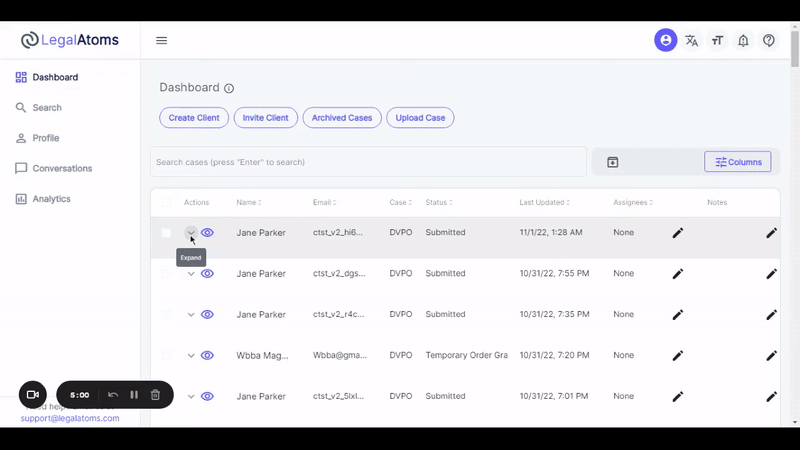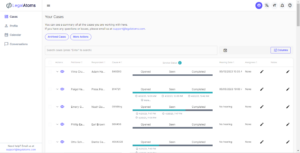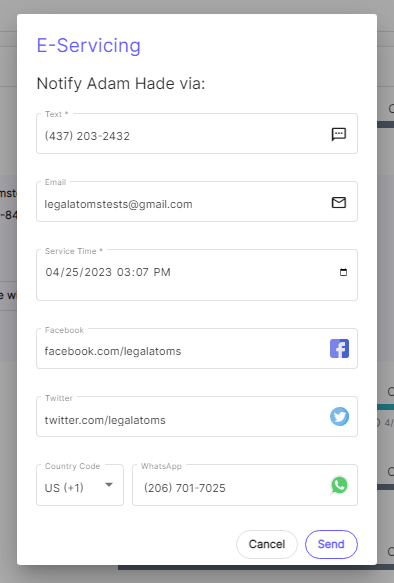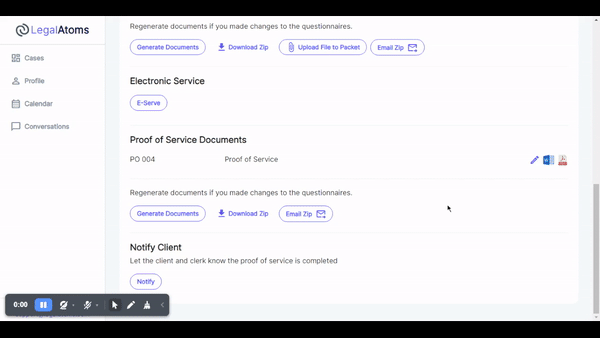Electronic Servicing
Recently updated on June 7th, 2025 at 07:33 am
Overview
LegalAtoms provides a complete solution for law enforcement agencies serve the case documents.
Typically, the case proceeds in the following steps with steps 6-8 covering electronic servicing.
- Petitioner prepares the case, and during the process may take help from advocates and facilitators
- Petitioner e-files the case
- The Clerk accepts the case and forwards the case to the judge
- The Clerk can optionally reject the case, which results in the case being returned to the Petitioner, who can then resubmit
- The Judge signs a temporary order and routes the case back to the Clerk
- The Clerk notifies law enforcement
- Law enforcement serves the case to the respondent
- Respondent acknowledges
- Law enforcement completes the Proof of Service form and routes the case back to the clerk
Of course, the workflow described can change depending on your court’s processes.

Steps for law enforcement
1. Login
The officer logs into LegalAtoms and lands on the case overview page. The page lists the cases routed to the law enforcement team. Typically, a single account is used by the department rather than a single account per officer so that there is cross-visibility on all cases.
2. Review servicing queue
The queue lists all the cases sent over to the law enforcement team, like an email inbox, with the latest case at the top.

Status
The green bar is a like a progress bar that lists all the stages a case goes through, from the moment the servicing request is received, to its completion.
- Opened: This means that in case the client was served electronically, the email or text message was opened by the respondent. This is just like the text message status of “Read” we see on iMessage or Facebook.
- Seen: The respondent has opened the e-service acknowledge form on their browser.
- Completed: The respondent has completed and submitted the acknowledge form.
Hearing
This column indicates the hearing date until it’s arrived.
Actions
- E-Serve: Opens a dialog that allows the officer to electronically serve the respondent their case documents
- View case details: Navigates to the case details page with more information on the case
3. Serve a respondent
An officer would click the “E-Serve” to deliver the case documents to the respondent electronically. Text messaging and email remains the most convenient and reliable way to serve, but law enforcement can choose any of the following means:
- Text
LegalAtoms pre-populates the respondent information provided by the petitioner. The officer can override these values.

3. Complete the proof of service form
Once the respondent acknowledges, the law enforcement agency receives a notification. At this point, the officer can complete the proof of service form digitally online from any device (laptop, smartphone, tablet). Then let the clerk and client know the Proof of service (POS) is completed.

Related Posts
Illinois Small Claims Court Limit $10,000
Overview The Illinois Small Claims Court allows individuals and small businesses to resolve monetary disputes up to $10,000 quickly and affordably. This forum exists within the Circuit Court of Illinois and is governed by Illinois Supreme Court Rules 281–289, which simplify pleadings, eliminate most discovery, and let ordinary citizens represent themselves without legal counsel. The…
How To File A Small Claims Case Illinois
Overview Illinois small claims are civil money cases for $10,000 or less (exclusive of interest and court costs) handled in the Circuit Court under streamlined procedures set by Illinois Supreme Court Rules 281–289. Filing is typically completed via the statewide eFileIL portal, with narrow exemptions for litigants who obtain an e-filing waiver. After you file…
Small Claims Court Pennsylvania Landlord Tenant Security Deposit
Overview Security deposit disputes are among the most common landlord–tenant cases in Pennsylvania’s Magisterial District Courts (MDJ), the small-claims forum for civil money cases up to $12,000. Pennsylvania’s Landlord and Tenant Act sets clear rules: the landlord must return the deposit (plus any accrued interest when applicable) and provide an itemized list of damages within…
How To Defend A Small Claims Lawsuit In Pennsylvania (Self-Represented Guide)
Overview If you’ve received a small claims complaint from a Pennsylvania Magisterial District Court (MDJ), you are officially the defendant in a civil action. Small claims cases in Pennsylvania cover disputes under $12,000 and are designed to be navigable without a lawyer. The court expects both parties—plaintiff and defendant—to appear, share evidence, and present their…

